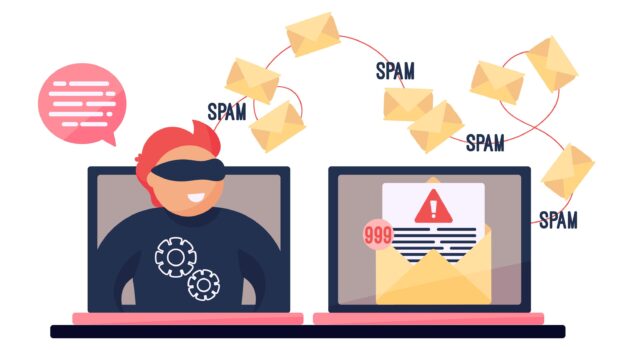How AI is Fighting Email Spam
Email spam has been a nuisance for decades, but it’s become even more of a problem in recent years. Spammers are constantly finding new ways to bypass traditional spam filters, and it can be difficult to keep up.
But there’s a new weapon in the fight against spam: artificial intelligence (AI). AI-powered spam filters are able to learn and adapt to new spam techniques, making them much more effective than traditional filters.
How AI Spam Filters Work
AI spam filters use a variety of techniques to identify spam. These techniques include:
Content-based filtering: This technique analyzes the content of an email for spam-related keywords or phrases. For example, an AI spam filter might look for words like “free,” “win,” or “money” in the subject line of an email.
Natural language processing (NLP): This technique uses AI to understand the meaning of the text in an email. This can help to identify spam that uses deceptive or manipulative language. For example, an AI spam filter might look for emails that use phrases like “click here” or “urgent.”
Reputation systems: This technique tracks the sender’s reputation and assigns a score based on their past behavior. Spammers with low reputation scores are more likely to have their emails filtered. For example, an AI spam filter might look at how many other people have reported an email as spam from a particular sender.
User behavior analysis: This technique tracks the user’s behavior and identifies patterns that are associated with spam. For example, if a user suddenly starts receiving a large number of emails from an unfamiliar sender, this may be a sign of spam. An AI spam filter might look at how often a user opens or clicks on emails, as well as how often they report emails as spam.
The Benefits of AI Spam Filters
AI spam filters offer a number of benefits over traditional spam filters. These benefits include:
Increased accuracy: AI spam filters are able to learn and adapt to new spam techniques, making them much more accurate than traditional filters. This means that they are less likely to allow spam emails through, and they are also less likely to mark legitimate emails as spam.
Reduced false positives: AI spam filters are able to better distinguish between spam and legitimate emails, reducing the number of false positives. This means that users are less likely to have their legitimate emails marked as spam, which can be a major inconvenience.
Improved user experience: AI spam filters can be customized to the user’s preferences, providing a better user experience. For example, users can choose to have their spam emails automatically deleted, or they can choose to have them quarantined so that they can review them later.
Future-proof: AI spam filters are constantly learning and evolving, which means that they are well-positioned to keep up with the ever-changing landscape of spam.
Understanding Email Authentication
Email authentication is a crucial aspect of preventing email spoofing and phishing attacks. It verifies the authenticity of email senders and enables the recipient’s email server to validate incoming messages. There are three widely used email authentication protocols:
Sender Policy Framework (SPF): SPF allows domain owners to define which IP addresses are authorized to send emails on their behalf. By publishing SPF records in the Domain Name System (DNS), domain owners specify the permitted senders for their domains. When receiving an email, the recipient’s server checks the SPF record to verify the email’s source.
DomainKeys Identified Mail (DKIM): DKIM employs cryptographic authentication to verify the integrity of an email message and its source. The sender’s domain adds a digital signature to the email header using its private key. The recipient’s server then uses the sender’s public key, obtained through DNS, to validate the email’s signature. This ensures that the email has not been tampered with during transit.
Domain-based Message Authentication, Reporting, and Conformance (DMARC): DMARC is an email authentication protocol that builds upon SPF and DKIM. It enables domain owners to specify policies for how email receivers should handle emails that fail SPF or DKIM checks. A DMARC policy also provides valuable reporting features to help domain owners monitor email activity and potential abuse.
In addition to email authentication, AI-powered spam filters can also be used to combat email spoofing and phishing attacks. These filters analyze the content of emails, as well as the sender’s reputation and behavior, to identify spam and phishing emails.
By combining email authentication and AI-powered spam filters, organizations can help to keep their inboxes free of spam and phishing emails, and protect their users from potential attacks.
The Future of Spam Fighting with AI
The future of spam fighting is bright thanks to AI. As AI technology continues to develop, we can expect to see even more effective AI spam filters in the future. These filters will help to keep our inboxes free of spam, making email a more secure and efficient way to communicate.
Cover Image by Freepik
















